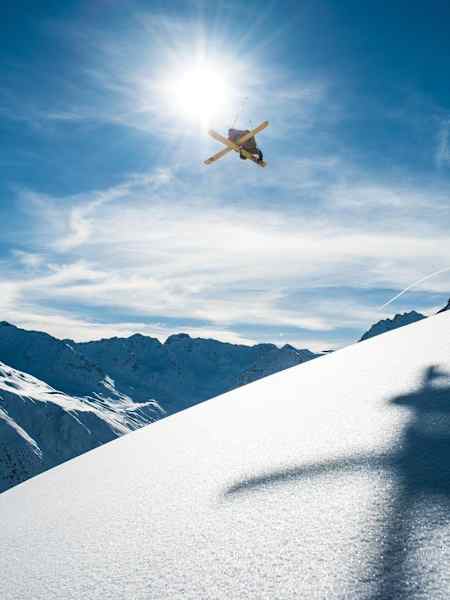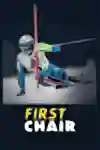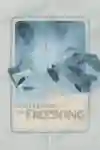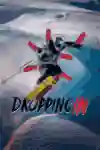Wintersports
Time was, skiing was simply about slaloming your way down a big powder-white slope in the fastest or most stylish way possible. But then freeskiing emerged, combining snowboard-like sensibilities (skills, big air, rails, gnarly jumps) with the two-legged freedom of traditional skiing.
Britain's number one freeskier Paddy Graham breaks down the three freestyle disciplines that takes place at the winter games.
01
Disciplines of Freestyle Skiing
- Slopestyle: "This is a ski run with jumps, rails and other obstacles, usually five to six features in all. You have to do tricks on every feature and perform a clean run to the bottom in order to get scored."
- Half-pipe: "The half-pipe is an iconic competition and freestyle skiing is a perfect match. The half-pipe itself is made out of snow and around 22ft tall, although it's almost ice-like, because the wall needs to be super strong and a perfect shape. You'll see riders getting around 5/6 hits [chances of airtime] as they go back and forth between adjacent walls on their way down."
- Big Air: "What’s cool with freeskiing Big Air is that you don’t need to keep your skis straight, you can cross them and do a lot of different grabs, which offers more variety than snowboarding where your body’s usually in the same position. Competitors will hit a 60-foot tall ramp and are awarded points for the more rotations and skills they can do while in mid-air."
But don't worry: there's no need to fling yourself towards the skies on any giant ramps just yet. "Freeskiing can be whatever you want it to be," says the Long Days star. Here, Paddy reveals how you can inject some of it into your next ride...

2 min
Paddy Graham
Paddy Graham sits in the first chair and answers all our burning questions about his skiing career.
02
Don’t worry if you can’t get to the Alps
"I grew up training on a dry ski slope in Sheffield, the Ski Village. You might be surprised to know how many dry ski slopes there are in the UK, at one point there were about 70! Either way there’s probably an artificial slope or ski centre about an hour from most people in the UK, so you don’t need to be from a mountainous country with lots of snow to get into the sport. Scotland has places to ski tour in winter as well."
Once you feel comfortable going 180 or 360 off a small jump, everything else will fall into place.
03
Do get the right skis
"On your average slope most people will use recreational skis with a flat tail on them. However, a freestyle ski has a twin tip, meaning it's turned up at both ends, enabling you to go backwards on your skis. The poles you hold in freestyle skiing also tend to be shorter to lessen the chance of them getting tangled between your legs if you grab your skis."
04
Don’t be reckless
"Whether you're on the slopes or in the backcountry, safety is everything. Do make sure to wear a helmet and don’t be pressured into doing anything you don't feel comfortable with. You don’t even have to think, ‘I want to get into freeskiing’, because it's the easiest discipline to get into. It’s not about any rules, it’s about expressing yourself and doing some jumps, or exploring the mountain. Have fun because ultimately that’s what it’s all about."
05
Do try skiing backwards
"The first thing you can try to learn as a freestyle skier is to ski backwards. If you don’t want to hit a jump just yet, you can ski backwards on your twin tips, it’s all about being able to control your skis and keep them parallel and get used to looking over both of your shoulders, surveying what’s behind you. Always be conscious of your surroundings."
Dive deep into the story of freestyle skiing, its origins, and how it continues to develop:

30 min
Generations of Freeskiing
Take a thrilling ride through the story of freestyle skiing, its origins and how it continues to develop.
06
Do train on the trampoline
"Aerial awareness is a huge part of being a good freeskier. As a kid my mum used to send me to half term courses at the local leisure centre and one was trampolining - it gave me a sense of how to control my body. I would go to the ski slope once a week and the rest of the time I'd replicate tricks I'd seen on TV on the trampoline in the garden. So in short, for freestyle skiing the best practice off the slopes is to go on a trampoline and bounce around and get used to being in the air and grabbing your feet and putting your body in different positions."
07
Don’t rush yourself
"Always start small, building your skills up gradually. The majority of what you will do stems from being able to hit a small jump. Once you feel comfortable or can do a 180 or 360, or even ski backwards off a small jump – like a table top, where there aren't big consequences – everything else will fall into place. After six months I'd definitely expect you to be able to achieve a 180 off a jump, half a twist, or even a 360, full spin. You can also practice those on dry land, too."
08
Do set yourself goals
"By the six-month mark you should set your goals on mastering a few grabs. A Safety Grab is the easiest one and is basically when you do a tuck and grab your foot. Another good one is Japan Grab, that’s when you have to reach around the back of your legs and grab your feet. There’s a Mute Grab where you cross the skis and grab the front, while Tail Grab is where you reach back and grab the back of the ski. They're all good fun and achievable with confidence and enough airtime."
09
Don't go in blind
"One of the biggest things to learn as a beginner is to spot your landing. You may see a jump coming up, but what's beyond it? Particularly when you’re sharing a slope with others, you need to look where you’re going to land and see it coming so you’re ready for it, to get your landing gear down so to speak. Besides, on the other side of the bump there could be a small child stood there or an obstacle like a tree."
10
Do stay solid in the jump
"With a lot of people attempting their first jumps, the instinct will be to crouch down and then jump off the end of the jump. Let the ramp do the work and be solid when you go off. Obviously have your knees bent, but if you crouch down too much, with the G-force when you come to the end of the jump, you won’t be able to stand back up again, and then you’re going to end up rolling onto your back or not having any balance at all."
11
Don't lean back on landings
"It comes back to balance and physical strength. If you’ve already found your balance on skis, through the G-force you experience turning on the slope you’ll know that you don’t want to land in a backseat position, stood in your boots bending your knees, like being sat on a chair, which gives you little control. Keep your weight quite central, or even a little bit forward, and use your power to do a squat, hit the snow and then stand back up again, because otherwise you run the risk of falling over."
12
Do keep your head up
"To perfect a jump and keep full control as your body spins it's all about your head position. Always keep your head up and your eyes looking forward, so if you go off a jump and look down at the ground the rest of your body will follow that. So keeping your head up will keep the balance. If you move your head too much you'll be all over the place."
13
Don't miss any freestyle evenings
"Most dry slopes and indoor places will have a freestyle night where they’ll put rails of different sizes out for you to practice on. This is perfect for beginners as rails can be quite big and intimidating, but some places will provide small boxes for you to ski on quite easily. Some of them are plastic and a meter wide. Once you've managed to ski onto one, learn to turn sideways and get a feel for jumping on skis. Once you've done that work your way up from a box which is level with the ground to a rail where you have to jump onto it and turn sideways before jumping off again. Balance is key. One thing I use a lot at home is a balance board, which looks like a skateboard but has a roller underneath it."
14
Do your homework before any ski trip abroad
"There’s a resort in Laax, Switzerland which has a really famous snow park encompassing half a mountain. There's even a Freestyle Academy at the bottom of it complete with a skatepark, trampolines and special skis with wheels to practice off-snow. Over in America, meanwhile, there’s a place called Woodward in Park City, Utah, which has a spot at the bottom with trampolines and foam pits where you can practice tricks with less risk than on the slope."
15
Don't just stick to the slopes
"Within the world of freeskiing there’s freeride skiing, or backcountry skiing, where you go off-slope into some unprepared snow. Once you have the skill to ski off-piste safely, the equipment and know the risks of avalanches, you can go anywhere in the world where there's snow and have yourself a ski tour. It's a great way to explore a mountainous area. In really thick snow you may want to buy telescopic poles which twist and open up to become longer, depending on the terrain."
Part of this story














